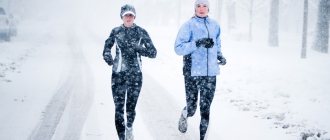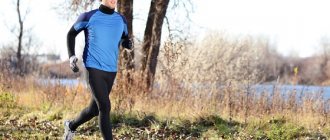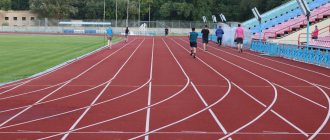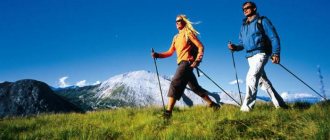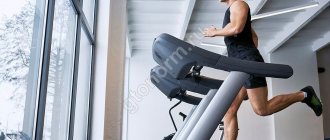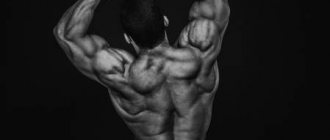What you need to know about running in winter?
Running in winter has special charms that are not characteristic of any other season. At this time, the athlete encounters additional difficulties and obstacles, occurring in the form of a slippery surface alternating with snow, asphalt and uneven surfaces with blocks of ice. No less difficult is created by increased humidity in the winter, which instantly affects the state of the body and the well-being of the runner.
Definitely, summer shoes are completely unsuitable for jogging in winter, since they are not only sensitive to cold, but also cannot stand on slippery and uneven surfaces. Lightweight sneakers instantly allow moisture to pass through, which exposes the athlete to a huge risk of getting sick.
In addition, incorrectly selected winter sneakers with spikes for active running in the snow significantly increases the load on the legs. The runner not only does not get a full workout, but also dooms himself to torment in the form of pain in the joints and muscles.
Membrane - innovation will provide comfort!
The fight against moisture becomes most acute in cold weather. Without special protection, shoes will get wet very quickly if there is melted snow or ordinary puddles on the runner’s path. Modern technologies—membrane materials—are already offering a solution.
Technically, a membrane is a matter with a special property. Its purpose is to remove moisture and sweat out and not allow water to pass back. Depending on the type of coating, there are completely waterproof sneakers and waterproof shoes. Almost every famous brand has patented its development:
- Climashield is a synthetic material that removes moisture, but practically does not absorb it from the outside;
- Gore-Tex membrane - provides good aeration and moisture resistance;
- Polartec Neoshell is a lightweight material that provides comfort due to good aeration;
- DWR is a special impregnation that almost completely eliminates the ingress of moisture.
In the line of one brand there will probably be sneakers with different levels of protection against getting wet. Therefore, the choice will depend on personal preferences, available budget and purposes for using sneakers.
Features of running shoes for winter
Sneakers for frequent running in winter on snow should be one with the athlete, his continuation and leading component, which will improve the quality of the distance, and not slow down this process. Some inexperienced athletes, wanting to save money, try to find cheaper analogues of winter shoes or purchase ordinary spikes. Such shoes are not suitable by definition, since they not only have an excessively thin sole, but also slip excessively. The main qualities that winter sneakers should have are the following:
- Availability of protection from dampness;
- Good ventilation;
- Waterproof;
- Availability of insulation;
- Strong, flexible sole;
- Anti-slip coating;
- The presence of rubber or removable spikes.
The choice of sneakers should be based not only on personal preferences in beauty and brand. Good winter shoes should fit comfortably on the foot, the toe and heel should feel free and move calmly. A fairly common problem occurs when the shoe is not fitted correctly and the runner experiences numbness in the front of the foot that gradually turns into pain.
Popular models
Popular running shoes can differ not only in design. A review of the models will help you determine the appropriate option:
- For trail running. The main difference is the rigid sole, which flexes slightly at the toes. There is also a special padded sock that protects against impacts on stones while running. The model is equipped with a thick tongue with an elastic insert. An important addition is metal spikes. Designed for running on sticky roads and snow.
- Road racers. Sneakers for running on compacted snow and asphalt. Model based on Teflon (repels moisture, does not allow cold to pass through).
- For natural running. Shoes with minimal cushioning, flexible, light, weightless, creating the feeling of running barefoot. The main characteristics are a thin sole, a slight drop from toe to heel.
Natural running is a technique in which the foot lands on the midfoot rather than on the heel. The body remains straight, as relaxed as possible. Helps avoid injuries and reduces stress on the spine.
For natural running in winter, sneakers need to be selected according to your individual training technique.
For trail running
Road racers
For natural running
What should you pay attention to when choosing sneakers for winter running?
Sports stores, Internet sites and markets offer a huge number of models of all kinds of winter sneakers. But how can you choose among them the truly correct and high-quality shoes that will be ideal for you? When you go shopping for winter sneakers, examine each model in detail, sensibly assessing its advantages and disadvantages. An important point is the region of residence. The climatic features of the winter season should also be taken into account when choosing winter running shoes.
This is interesting
- [uaf_vkcount url='https://beginogi.ru/kak-pravilno-nachat-begat-dlya-nachinayushhih-uroki-i-programmyi-bega/']
How to start running correctly: running lessons and programs for beginners
- [uaf_vkcount url='https://beginogi.ru/kak-vliyaet-na-organizm-probezhka-pered-snom-i-chto-delat-esli-posle-utrenney-probezhki-hochetsya-spat/']
How jogging before bed affects the body and what to do if you feel sleepy after a morning jog
- [uaf_vkcount url='https://beginogi.ru/biomehanika-hodbyi-i-bega-chto-nuzhno-znat-o-biomehanike-myishts-cheloveka/']
Biomechanics of walking and running: what do you need to know about the biomechanics of human muscles?
Material
The material in winter sneakers should be much more solid than in the summer model. Despite the fact that the latter option allows air to pass through well, it is not able to protect your feet even in mild frosts.
You should avoid sneakers made of leather, as they absorb moisture incredibly strongly. Reagents and salt, often spilled everywhere in winter, instantly corrode and spoil the skin. After a few runs like this, not a trace will remain of your shoes.
Give preference to sneakers made of lightweight and waterproof material . The best choice would be a membrane material with additional insulation.
Protection
Waterproof protection is a must in winter sneakers. It comes in two main varieties.
Water-repellent membrane - sneakers with this coating are suitable for those whose winters are predominantly warm, accompanied by slush and not too low temperatures. These shoes can be used for running in late autumn or early spring.
Absolutely waterproof - these shoes are used in extreme cold. These sneakers are absolutely not afraid of snow and any humidity.
Sole
Brands that produce winter shoes offer models with different types of soles. So, the buyer can choose sneakers with rough or rubber spikes. An alternative option would be an ordinary flexible sole, which is in no way inferior to fashionable and popular spikes.
Additional items
It is advisable that winter shoes have reflective elements .
In early winter mornings and evenings, visibility is quite poor, which creates additional difficulty and danger for runners. The athlete runs the risk of being hit by a cyclist or motorist. To prevent this from happening, you don’t need to be afraid to look funny. In this case, any potential danger to the health and life of the athlete should be sensibly assessed.
- Crazy Runner
- On 01/07/2020
- https://crazy4running.ru
The best running shoes for winter. Models are grouped according to the weather conditions in which they should be used.
Unless you live on the Equator, summer flies by for you. We've already put away the T-shirts and sandals and taken out quilted jackets, hats, gloves and the like. And shoes. To be more specific, running shoes.
Not all winters are the same. There are places where "winter" temperatures hover around 18°C. In that case, you don't even need to read this article. Just read any of our best sneakers guides to find the shoe that suits your tastes.
This list is for more serious tasks. Temperature conditions are 4 °C and colder. Adding to the harsh winters is snow and treacherous, icy sidewalks.
This brings us to another subtopic. Are you going to run in urban conditions or off-road? If you mostly run on snowy trails in the winter, you'll need a lot more than just shoes with a membrane.
Running on ice requires a different set of features from a shoe, including a sole designed specifically for ice. Because in icy conditions, even the "sticky" rubber compound that typically performs on wet, slippery surfaces fails to meet the necessary performance standards.
Therefore, it makes sense to divide this guide into three sections. We'll start with the "easiest" category first. These versatile winter running shoes feature a waterproof membrane to keep the elements dry. When worn with the right pair of socks, the upper also protects the foot from the cold.
The next group includes winter running shoes that you can wear for jogging in the snow. A typical scenario involves running on snowy sidewalks or on flat paths in a park. Off-road running shoes with a membrane upper perform well in these conditions. The outsole has an aggressive tread pattern that provides decent traction until the surface underfoot becomes icy.
There is another type of winter running on paths not cleared of snow in a forest, field, or park. Since you're pretty much on your own, you need high-top sneakers that provide good support and keep your feet dry and warm.
The last type of winter running involves the hardcore, places where others are afraid to tread. In a good way, we're talking about icy surfaces. Unlike snowy or wet roads, slippery, icy surfaces are the last place you want to run on. But you know what? There are those who like to run on icy lakes, and for them our fourth category of running shoes is suitable.
Summarizing all of the above, running shoes for winter have their own individual characteristics. The weight of a particular model will depend on the level of preparedness for winter conditions.
A) Waterproof. Whether you're running in the winter without snow or in a snowstorm, be sure to use a waterproof top. The use of a Gore-Tex membrane is a good indicator of waterproofing, but proprietary technologies such as Columbia OutDry are also effective.
B) Thermal insulation. Most models with waterproof uppers meet this criterion when paired with a pair of winter socks. Designed for extreme winter conditions, these sneakers feature a durable, wind-resistant outer design.
C) Low light visibility. There is never too much sun in snowy winters. If so, you will need to run in low light conditions frequently. The reflective trim on the upper will come in handy. Some models, such as the Salomon Speed Cross Nocturne, feature mesh with reflective details throughout. Even Nike's seasonal Shield collection (not featured in this guide yet) does this job well.
D) Choosing a low or high top model. You'll need ankle-high shoes if your winter runs are away from busy trails. The waterproof ankle gaiter prevents snow, debris and water from getting inside the shoe.
E) Outsole grip. Dry, wet, snowy and icy conditions require different rubber compounds. This is similar to the difference between summer and winter car tires. This is especially true when running on ice, where even Velcro rubber won't cut into it.
There are also universal requirements such as a soft ride and a comfortable upper with a secure fit.
For running in winter with a predominance of rain and fog:
These shoes are designed for milder winter conditions without snow. But while running you may get caught in snow and fog. Summer sneakers will quickly get wet in such conditions. What you need here is a water-repellent upper that will keep your feet dry.
1) Asics GT-1000 8 GTX
The Gore-Tex version of the GT-1000 is basically the same as the road model, except for the off-road outsole tread and waterproof upper. This change also makes the upper warm enough for cold weather running. Despite having a molded-in hard foam unit, the 1000 behaves like a neutral-cushioned training shoe. The retail price is not bad for a GTX lined running shoe. It is also worth taking a closer look at the Asics Pulse 11 GTX model.
2) adidas UltraBoost All Terrain
If the Ultraboost ATR looks like a warm pair of socks from afar, that's because it is. An elastic cuff is built into the water-repellent knit upper, allowing the upper to feel like a second sock. Hard plastic is present only in the lacing area. Thus, you are free from the obtrusive plastic “cage” in the midsection (as was the case with the Ultraboost OG). The heel features reflective inserts to keep you visible when running in low visibility conditions. The full-length Boost midsole provides a plush, cushioned ride feel. And it's Boost foam, so you don't have to worry about your shoes getting stiff in the cold. The time-tested adidas Continental rubber outsole has a special tread suitable for off-road running and reliable grip on wet surfaces.
3) Mizuno Wave Rider 23 GTX
GTX stands for the iconic Wave Rider 23, featuring a Gore-Tex membrane, making it ideal for running in the worst weather conditions on asphalt. We talk about running against wind and rain as inevitable “partners” in the coming months.
The heel uses durable and wear-resistant X10 rubber. It should be noted that the outsole tread pattern is more aggressive, which distinguishes the GTX version from the regular asphalt model. The design of the lugs in the front and rear serves to improve traction and smoothly guide the foot over snowy/uneven surfaces.
A micro-relief in the form of dots is applied to the protrusions, the purpose of which is nothing more than to improve grip on a wet surface.
4) Nike Zoom Pegasus 36 Trail Gore-Tex
Not only does the Pegasus 36 Trail's upper feature a waterproof Gore-Tex membrane, but it also keeps the cold out very well. What keeps water out also does a good job of blocking wind, so these shoes work well as winter sneakers.
What's more, the waterproof version of the Pegasus Trail offers excellent low-light visibility. The laces and tongue are made of reflective material to make your runs safer. The rubber tread provides good traction of the sole with the road, except on ice-covered surfaces.
Sneakers for running in winter in urban conditions:
Use these sneakers for snowy sidewalks and parks. The aggressive tread of these sneakers bites well into wet surfaces (slush, muddy ground), and the waterproof upper keeps your foot warm and dry. On the other hand, if your runs are in deep snow, skip this section and move on to the next one.
1) adidas Terrex Agravic XT GTX
The full-length Boost midsole gives the Terrex Agravic GTX excellent cushioning on long winter runs. Widely spaced lugs on the Continental outsole provide reliable traction. At the same time, the space between them is not clogged with snow and dirt. The upper is waterproof and protected with a Gore-Tex lining and molded urethane reinforcement over dense mesh.
2) Asics Gel-Sonoma 4 GTX
Winter running shoes with Gore-Tex membranes tend to be expensive, so the Sonoma 4 GTX is a pleasant surprise in terms of price. These waterproof shoes will keep your feet warm and dry. At the same time, this budget model does everything that is required from a winter sneaker. The off-road-ready outsole is good for slushy roads and snowy trails. The upper uses dense mesh and a combination of molded and stitched overlays for protection. Underfoot cushioning is provided by Amplifoam foam, which has enough damping properties for most daily runs.
3) Salomon Speed Cross 5 GTX Nocturne
These are shoes for early winter mornings, when there is little light and a lot of snow outside. The Speed Cross 5 GTX Nocturne is the only model in this guide to feature reflective detailing throughout the upper.
In other words, the molded overlays on the waterproof mesh upper are made from a shiny material to keep you visible to others in urban environments. The Ortholite foam midsole and sockliner provide miles of cushioning, while the sharp lugs of the Contagrip TA outsole give the shoe the traction it needs.
See also: Salomon Sense Ride GTX Nocturne
4) Mizuno Wave Ibuki 2 GTX
You can wear them from the door of your house and run along snow-covered streets, asphalt, until you reach forest paths. Wave Ibuki 2 is ideal for door-to-wood runs.
Here are sneakers for running in winter with a thoughtful design, a waterproof Gore-Te membrane, a classic shape both in design and in basic characteristics, with high-quality finishing. They are comfortable for any type of foot and protect them well. Due to the flexible sole, they perfectly adapt to simple terrain.
We also note the stability of the step due to the width of the sole and the presence of generous cushioning (Mizuno Wave system), especially in the heel. All of this makes the runner wearing the Mizuno Wave Ibuki 2 feel more confident while running on nearby snow-covered park trails and city roads (which may not be the smoothest).
Sneakers for winter jogging outside the city:
This is where things get serious. Running outdoors—whether in mountainous or forested terrain—means tackling deeper snow, frozen slush, and other wilds. In these conditions, high-top shoes protect the foot better than low-top shoes.
1) Salomon Snowcross 2 cswp
Here's how this model works: Inside the waterproof gaiter are sneakers that are independently adjustable. Once the shoe is secured to your foot with the quicklace lacing system, you can pull down the zipper to create a waterproof shield that keeps water, snow and mud out. The grippy Contagrip outsole provides versatile traction on loose/packed snow. Use with winter socks for best results.
2) Hoka One One Speedgoat Mid WP is a speed shoe designed with an emphasis on comfort and lightness. The upper features a boot-like design made from Skyshell membrane to protect against water, snow and dirt. This shoe features a compressed ethylene vinyl acetate (CMEVA) midsole for cushioning and support. The Vibram Megagrip outsole provides traction on technical terrain.
Ice running shoes:
If you're such a hardcore runner that you'd trade the comfort of your treadmill for running on ice in the great outdoors, then this is the shoe for you.
1) Saucony Peregrine 8 ICE+
Very few running shoes use Vibram Arctic Grip rubber, a composite specifically designed for wet and icy conditions. This makes the Peregrine the perfect shoe for your winter runs. The ICE+ version is based on the regular Peregrine version, so you get the same comfortable Everun Topsole+ EVA midsole cushioning. The upper uses molded layers over ripstop mesh to keep the foot warm and keep dirt out. You can increase your insulation by wearing a pair of modern, warm running socks.
2) Salomon Spikecross 5 GTX
This is the equivalent of nuclear weapons for winter running. After all, what running shoes have tungsten cleats? This extreme adaptation of the Salomon Speedcross adds a dozen studs to the grippy Contagrip outsole for versatile traction on loose/packed snow and ice.
The upper is protected from external wet conditions with a Gore-Tex membrane. The sneakers fit quickly and easily onto your foot using the quicklace lacing system, which is great for gloved hands in cold winters.
This review is part of a series of reviews that I wrote for the website professionalsport.ru Do you have any questions? You can ask them to the consultants of this online store
Studded sneakers for winter running: advantages and disadvantages
Winter running shoes with spikes are comfortable enough for long distance running and long training on frozen ground. They, like any type of shoe, have not only advantages, but also disadvantages. The main advantages of sneakers with spikes are as follows:
- The spikes cope well with a wide variety of soil conditions in winter, be it ice, snow, puddles or frozen, dry soil.
- Special winter sneakers for training have thick soles. This is the main difference between winter studded boots and the usual summer version of “studded boots”. Regular summer sneakers with spikes are not suitable for winter jogging. This is due to the thin sole, which freezes quickly in sub-zero temperatures.
- The spikes on winter sneakers can be easily removed. This makes it possible to adapt your shoes to weather conditions or a specific type of workout.
- Despite the significant thickness of the soles of winter studded sneakers, high-quality models are highly flexible and perfectly follow the shape of the foot while walking and running.
The disadvantages of the winter version of studded sneakers include the following parameters:
- Running requires a lot of effort. This is due to the fact that the thick sole and additional studs significantly make the shoes heavier.
- The likelihood of tripping increases. Thorns are not as insidious as chains, which can even make you fall off your feet by tripping over a branch lying on the ground. But by the end of the workout, a tired runner can still accidentally catch a spike on uneven ground and get injured.
- Not all sneaker models allow you to remove the cleats at will. When it’s cold and dank outside, the spikes will get in the way, and the summer version of the sneakers is still inappropriate, this parameter significantly complicates the task of choosing sneakers for the weather, because it is not possible to unhook the spikes.
This is interesting
- [uaf_vkcount url='https://beginogi.ru/begovyie-krossovki-saucony-preimushhestva-i-nedostatki/']
Saucony running shoes: advantages and disadvantages
Gaiters keep your ankle warm!
If the model is presented with protective leggings (shoe covers), this is a godsend for those who appreciate jogging in the most extreme weather conditions. The element provides protection for an otherwise open space: at the ankle between the textile part of the shoe and the bottom of the trouser legs. Now you won’t be afraid of splashes, which previously led to noticeable discomfort despite the high-tech nature of the chosen pair. However, the athlete must accept the inevitable weight of sports equipment. In addition, in the opinion of most, gaiters spoil the spectacular appearance of a brand new pair.
